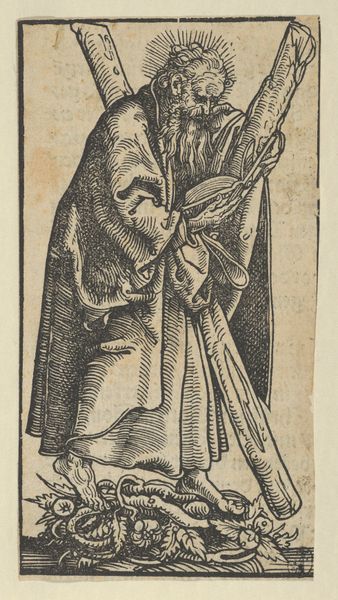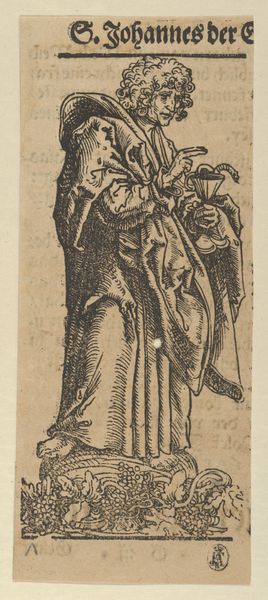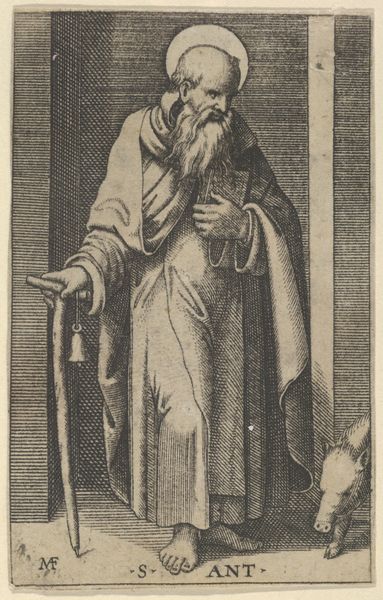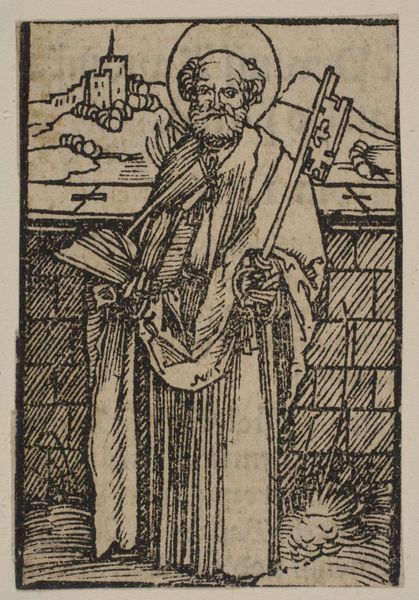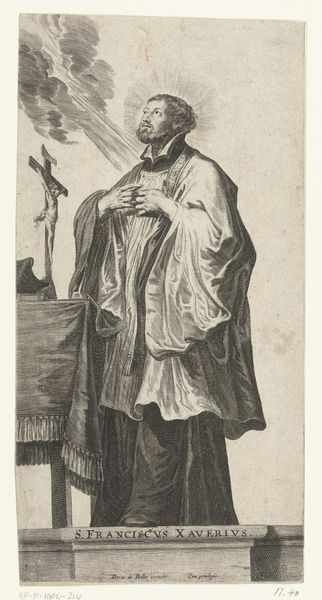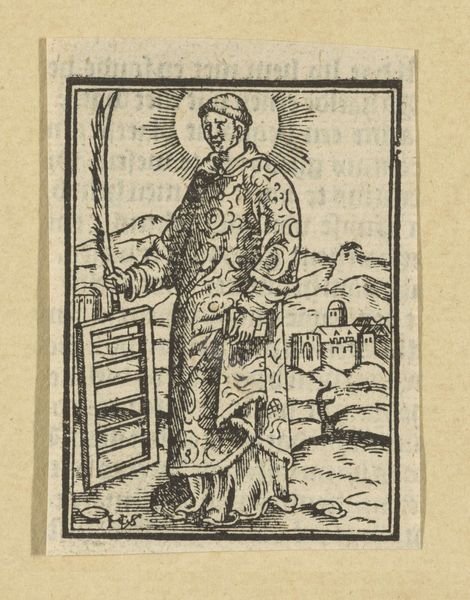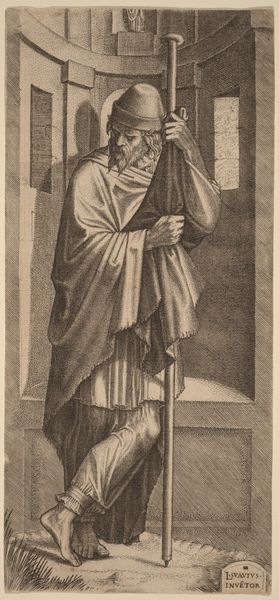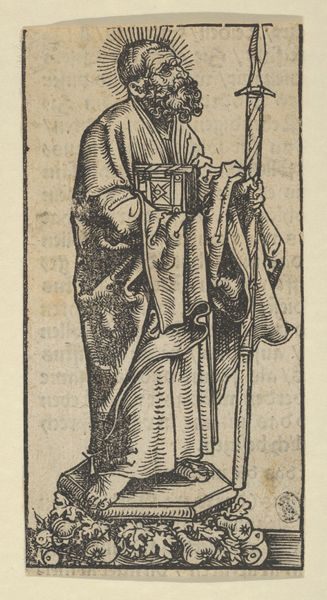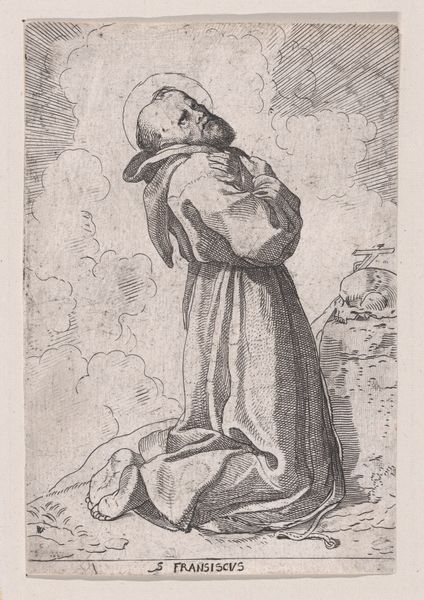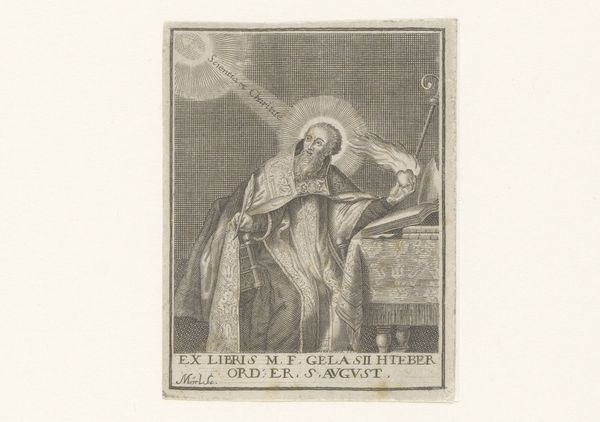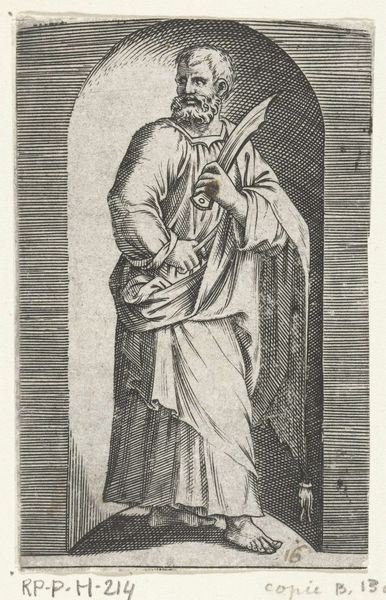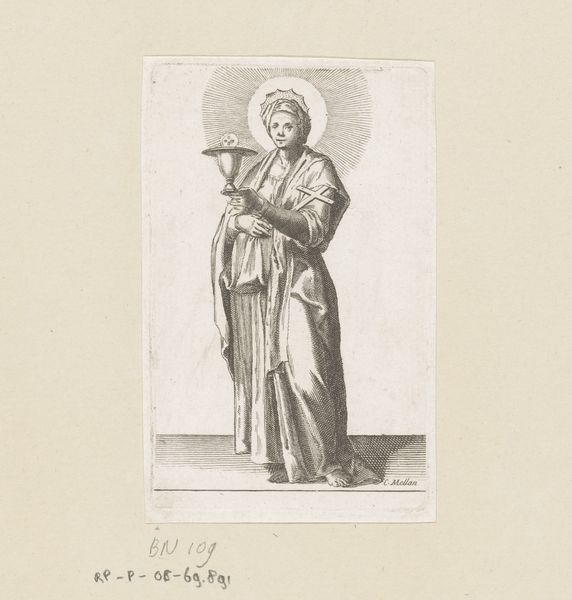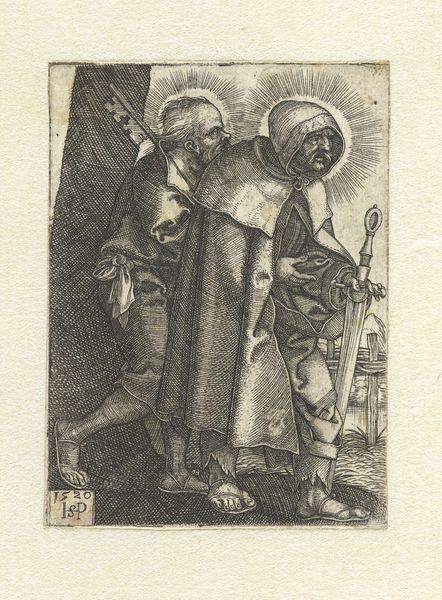
print, engraving
#
portrait
#
baroque
# print
#
figuration
#
history-painting
#
engraving
Dimensions: height 126 mm, width 103 mm
Copyright: Rijks Museum: Open Domain
Curator: Looking at this print, "Heilige Benedictus," or "Saint Benedict," engraved by Christoffel van Sichem II around 1648, the first thing that strikes me is the density of the lines. It almost creates a tangible texture on the page. Editor: Indeed. I'm drawn in by the figure's serene expression. Yet, observing it through the lens of monastic traditions and power structures in religious representation, I perceive layers beyond simple piety. Consider Benedict’s halo, his crozier... these symbols historically authorize the power he embodies. Curator: Absolutely. The setting also lends itself to a reading of monastic visual culture in the period. We are seeing the figure presented through an artistic milieu inextricably tied to the social history of the church at the time, certainly. His robes suggest a specific order. What resonates, I think, is how this echoes both tradition and the period's artistic trends. Editor: I concur. Thinking critically about iconography and historical portraiture can reveal intricate relationships between church, state, and subject. Who was van Sichem trying to reach with this work? Which sociopolitical messages were being transmitted? The symbolic language certainly tells its own complex story about class, gender, religious reform, perhaps… Curator: Examining the institutional contexts also matters; van Sichem probably made this to circulate among wealthy religious followers of the period. How was an image like this viewed then, versus now? Editor: Right. To contextualize: the Reformation was reshaping religious identities at the time; consider the shifting narratives surrounding sainthood and devotional practices. A critical eye challenges assumptions—are we truly capturing his essence, or upholding specific historical narratives? Curator: Ultimately, this small print encapsulates the profound intersection between art, religious conviction, and socio-political forces during its time. Editor: A dialogue that invites us to engage with these figures beyond a simple acknowledgement of saintly virtue and instead asks complex questions regarding agency and visual language in the period.
Comments
No comments
Be the first to comment and join the conversation on the ultimate creative platform.
